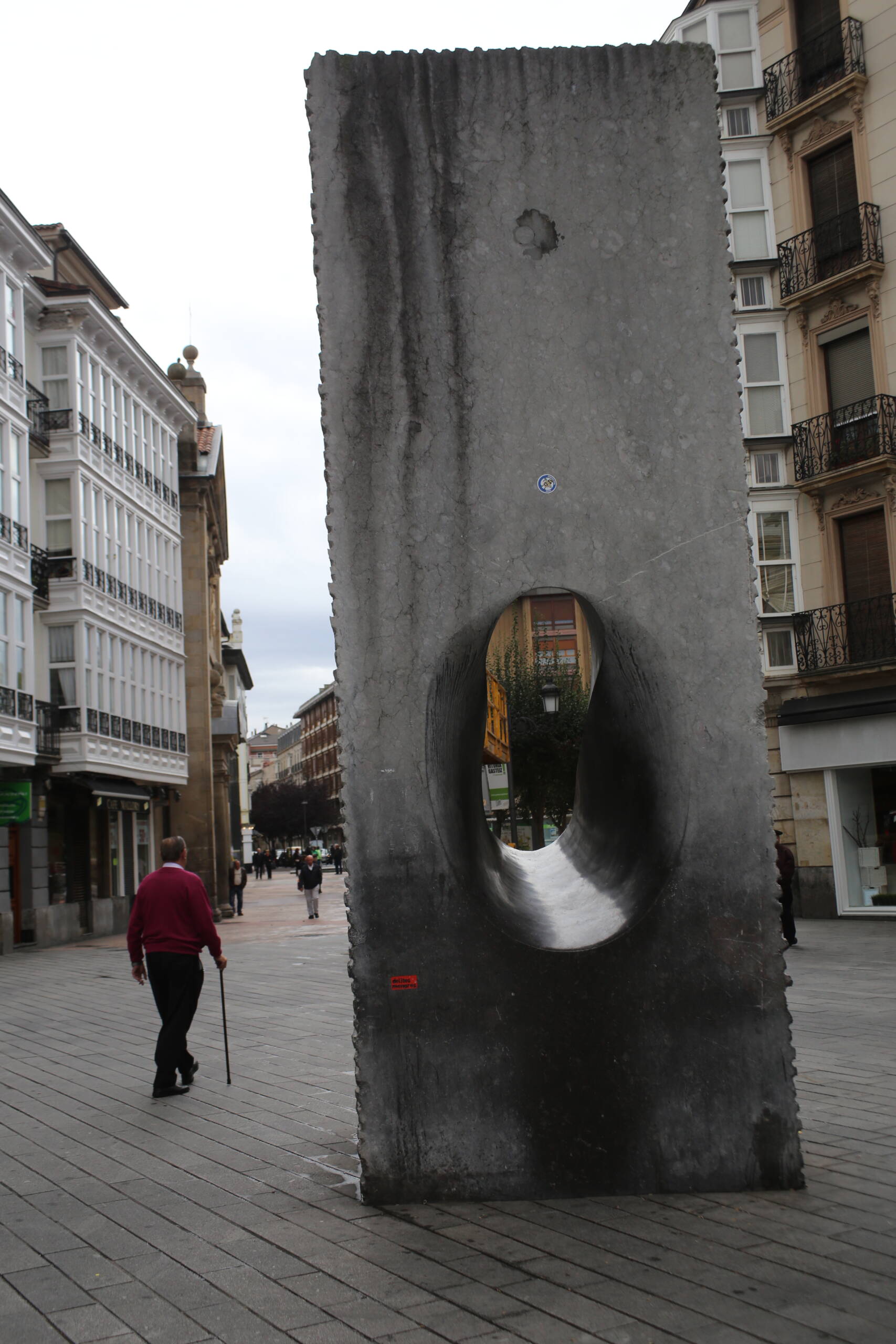This striking image captures one of Vitoria-Gasteiz’s more modern and abstract landmarks, a massive vertical stone slab with a perfectly carved oval void in its center. Its surface is rough, grey, and weathered, almost recalling the texture of raw concrete or volcanic rock, yet its form feels deliberate—art designed not just to be seen, but to be looked through. The void frames the street beyond, pulling your eye toward the trees and buildings in the background, like a natural lens that turns the city itself into part of the sculpture.

What makes it fascinating is the contrast it creates with its surroundings. Around it stand the classic Basque urban façades—white wooden galleries with black railings, elegant beige apartment buildings with iron balconies, and busy shopfronts at street level. The sculpture interrupts this familiar rhythm with its bold simplicity, acting like a pause in the visual noise of the street. On the left, an elderly man walks past with a cane, his presence anchoring the scene in everyday life and reminding us that public art here isn’t roped off in museums—it exists in the same space where people move, shop, and live.
In a way, the piece reflects the city’s identity. Vitoria-Gasteiz balances its medieval heritage with a forward-looking spirit, and this kind of urban sculpture embodies that. It doesn’t depict a historical figure or event, but instead asks passersby to reinterpret their own cityscape, to stop for a moment, and to see the world framed differently. For travelers, stumbling upon this installation while walking the central streets is like discovering a hidden metaphor: Vitoria is not just to be walked through, but to be looked into.
Leave a Reply